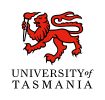Author's posts
Dec 22 2016
University invests $5 million to ensure computer power matches research demands.
The University of Tasmania is investing in a new high-performance computer cluster (HPC) to meet the needs of a research thrust that is becoming increasingly data intensive. University Acting Deputy Vice-Chancellor (Research) Professor Clive Baldock said the investment – which will include hardware and data centre facilities – will strengthen the University’s research effort to …
Sep 06
Cloud Starter Workshops
Cloud Computing is fast becoming the most effective way for researchers to use “commodity” computing and storage resources for their eResearch needs. The NeCTAR Research Cloud (built on OpenStack) delivers these resources freely to researchers throughout Australia. This environment allows research to grow and expand beyond desktop and local infrastructure, enabling truly global research collaboration, expandable …
Jan 18
TPAC makes research easier with desktop in the cloud.
Researchers are often time-poor, and TPAC understands how important it is to offer services to researchers that are familiar, have been pre-configured with research tools and are quick to deploy. With this is mind TPAC have created a number of cloud based Virtual Machines (VM’s) that run within the National Research Cloud (NeCTAR). By using the …
Sep 09
The Marine Virtual Laboratory (MARVL).
One of the many services that TPAC offers to research community is MARVL, The Marine Virtual Laboratory. The following is a brief Introduction to MARVL, how it can be accessed, and what you can do with it. You can also find out more about MARVL at www.marvl.org.au
Jul 29
New $8.75 million research resource launched
Tasmania continues a 20-year tradition at the crest of the nation’s research computing capacity with the launch today of the Tasmanian eResearch Cloud. The cloud will store important scientific data collections and also allow researchers to access enormous computing power from a standard desktop PC. The $8.75 million project is the result of a collaboration …
Mar 28
TPAC Supports Weather@Home Project
Any Australian with a home computer and an internet connection can now power up a climate model and help scientists find the causes of record high temperatures and drought that hit Australia and New Zealand in 2013. The online climate experiment, Weather@Home has been created by a group of scientists from the University of Melbourne, …
Jan 29
A MARVLIS Edge!
A video explaining the Marine Virtual Laboratory Information System (MARVLIS), and how it brings together a variety of data into one simple informative web portal. Need more information about MARVLIS? marvlis.blogspot.com.au Would you like to use MARVLIS? marvlis.aodn.org.au/marvlis/
Jun 18
MARVLIS Software Release v1.0
MARVLIS (Marine Virtual Laboratory Information System) has now been completed. MARVLIS is an “add-on” or a value added software package that provides a number of tools that can be used by the Marine Research Community. If you would like to learn more about MARVLIS, then please visit the MARVLIS blog. MARVLIS has been produced with …
Mar 01
TPAC writes first byte to RDSI storage.
After recently switching on the new TPAC RDSI Node, we would like to announce that we have written the first byte of data and we are now pushing to move as much data as we can to this new resource. “RDSI provides researchers with greater access to their data, at much faster speeds and with …
Nov 19
RDSI Storage Arrives!
Construction of a 1PB storage node at UTAS is well under way with UTAS taking delivery of 5 pallets or 2.3 tonnes of infrastructure storage equipment. TPAC staff have been eagerly awaiting its arrival with plans to have it installed and operational as soon as possible. The general consensus is it’s “All very exciting…” The …
- 1
- 2





Recent Comments